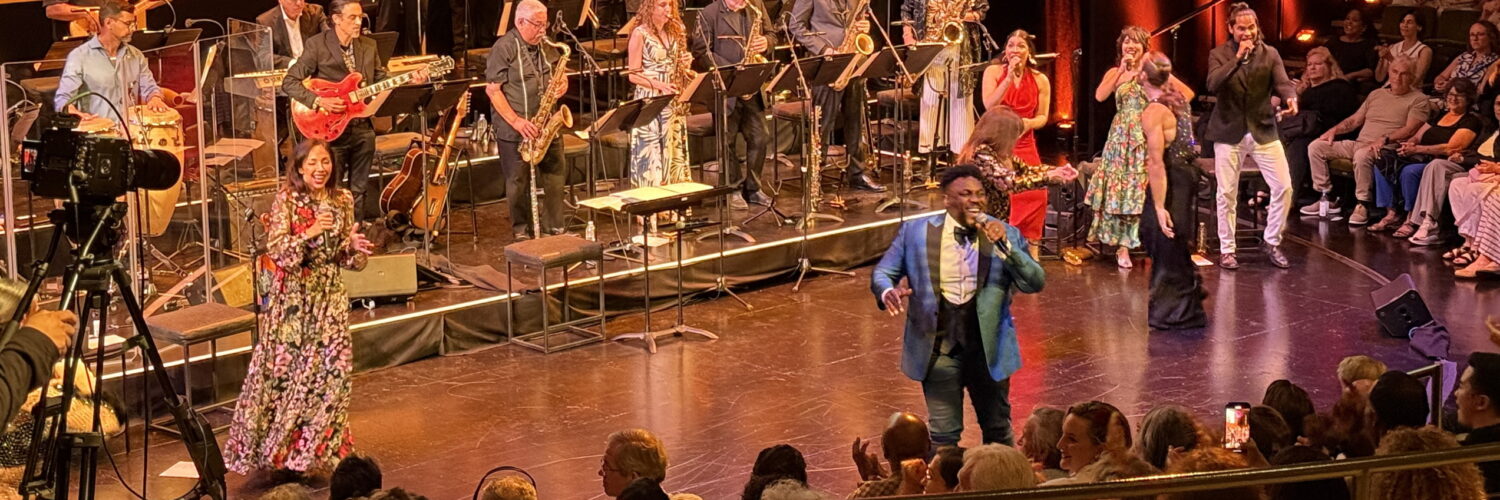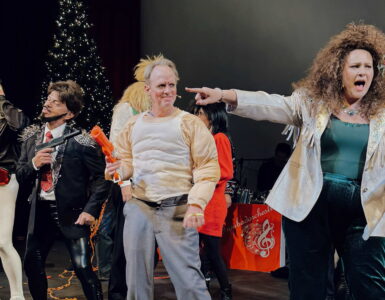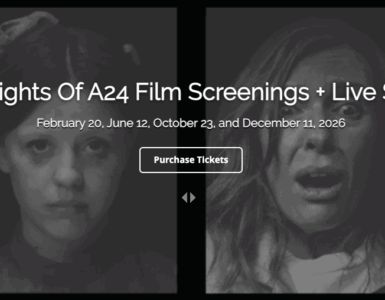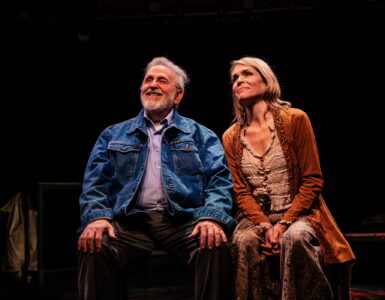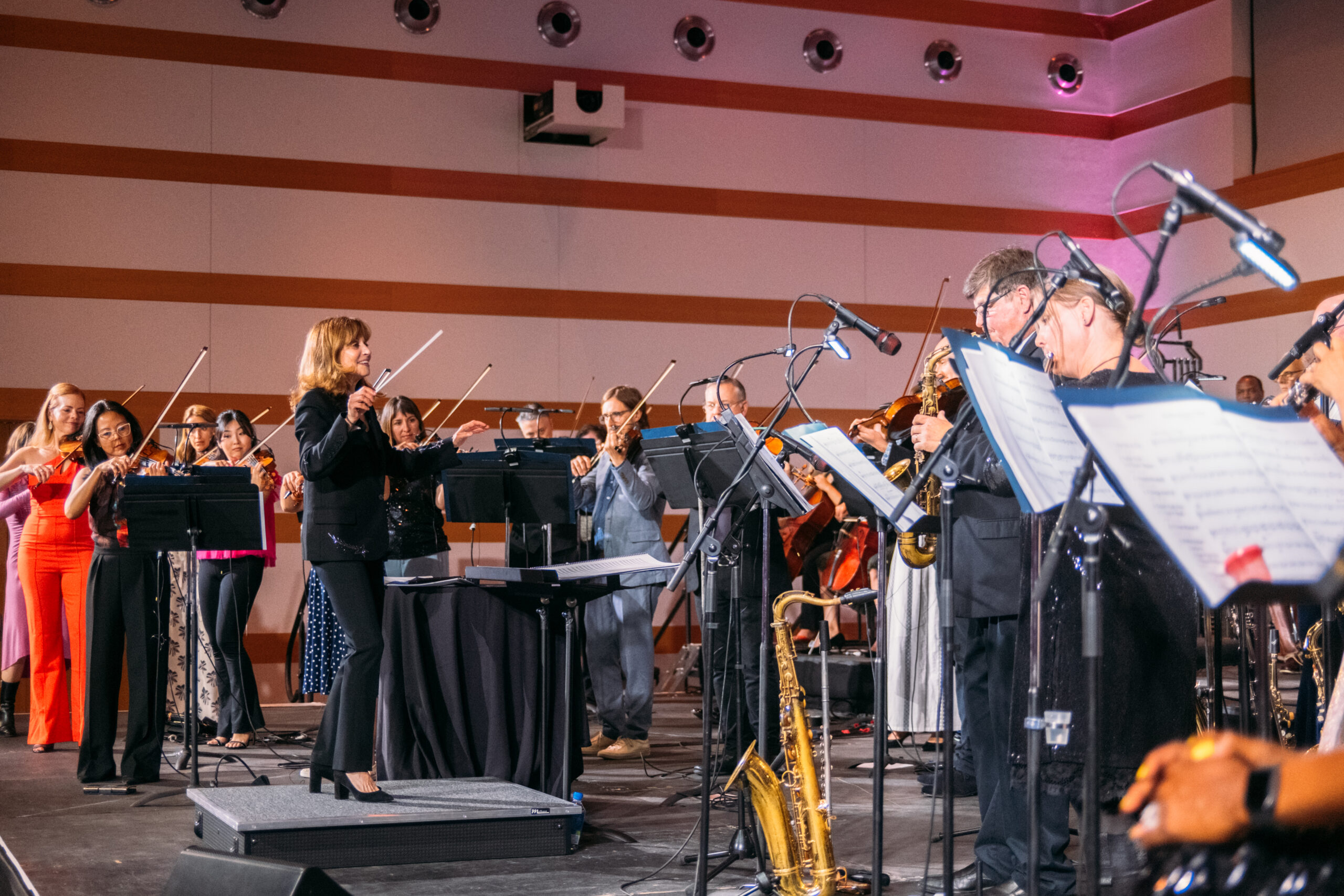
A MUSE/IQUE concert is not simply entertainment; it’s an education. MUSE/IQUE’s Artistic and Music Director Rachael Worby mesmerizes us with her detailed lectures, beautifully researched and recounted from memory with no teleprompter. Her knowledge is vast and her passion is infectious.
MUSE/IQUE’s 2025 season is themed “Make Some Noise: Music and Stories of American Defiance and Hope.” The group continued their 2025 season with four performances of LIKE IT LIKE HARLEM: Salsa, Boogaloo, and the Making of a New Musical Playground in New York, at the Mark Taper Forum at the Music Center, presented with Center Theatre Group. Guest performers included vocalist Rogelio Douglas, Jr., vocalist/violinist Yvette Gonzalez-Nacer, and Oscar Hernández, piano and concert consultant.
With Like It Like Harlem, MUSE/IQUE took a vibrant detour uptown, celebrating the cultural crosscurrents of Spanish Harlem with a dazzling blend of Latin jazz, salsa, and swing. Conductor and curator Rachael Worby served as both historian and host, connecting each number to the Manhattan neighborhood’s rich tapestry of Puerto Rican, Cuban, and African-American influences.
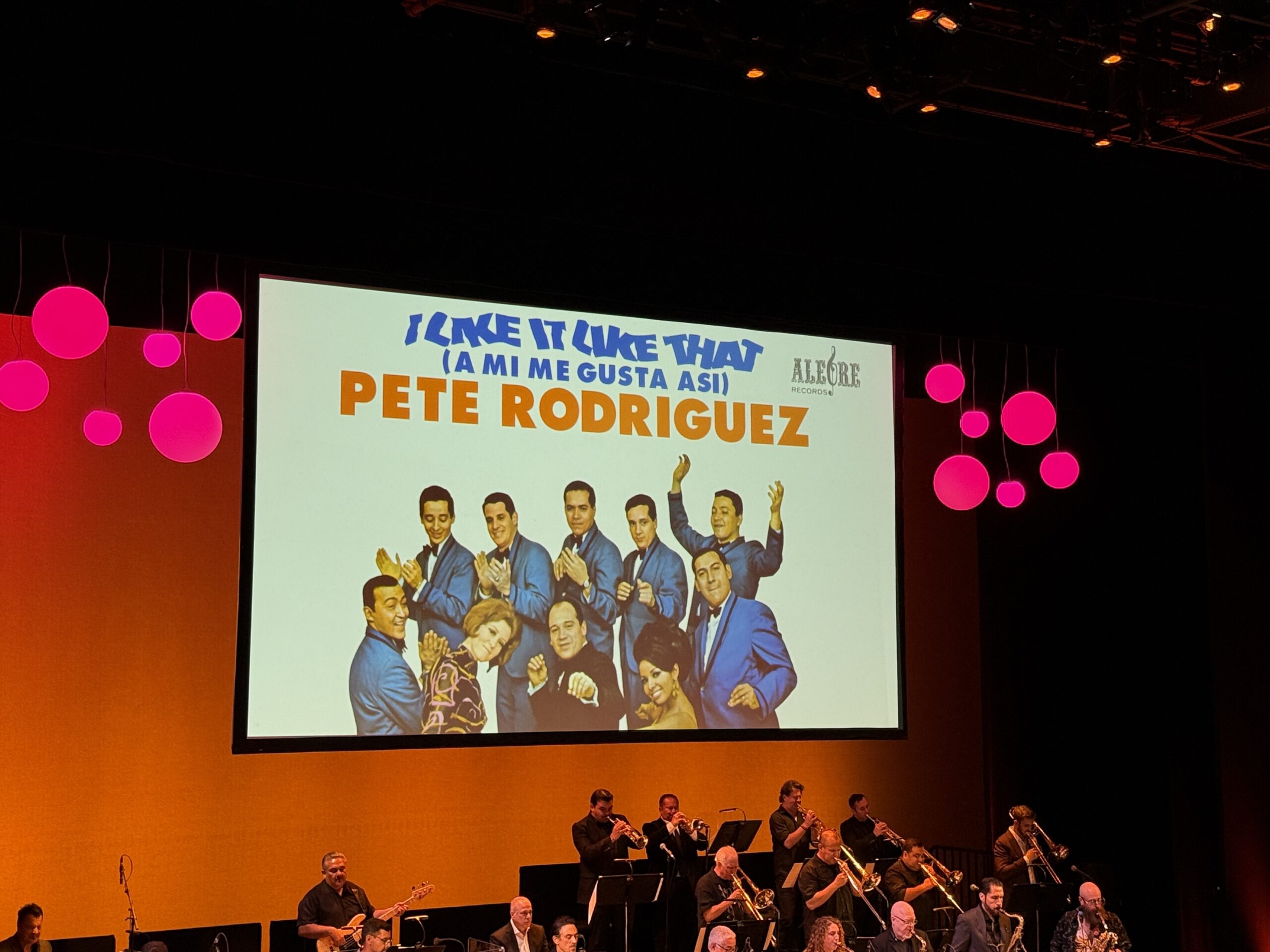
Last weekend’s concerts traced the emergence of Latin Jazz, beginning with Tito Puente’s cha-cha-cha hit tune Oye Como Va. Worby noted how the psychedelic rock stylings of Mexican-born guitarist Carlos Santana later reinvigorated an interest in salsa and Latin percussion with his celebrated cover of this popular tune. Oye Como Va had its origins back in 1962 as Tito Puente created a sleek Latin jazz groove built on a hypnotic bass-piano riff, minimal vocals, and driving percussion. Santana’s 1970 Abraxas version swapped the brass for electric guitar and Hammond organ, slowed the tempo, and infused the tune with rock-blues energy without losing the original’s infectious pulse. The result bridged Latin, jazz, and rock audiences, landing in the Billboard Top 20 and becoming a timeless dance floor staple. Short on lyrics but rich in rhythm, it’s a masterclass in cross-cultural musical fusion.
Performing the evening’s opening number, it seemed to take a minute for the band to click in into a groove for Oye Como Va, and the song didn’t quite ‘swing’ as anticipated. But for the rest of the night the band was in the pocket.
Presenting spicy songs from “I Like It Like That” to “Babalu,” and “Caravan” composed by Duke Ellington, the artists on stage paid tribute to legendary artists such as Pete Rodriguez, Tito Puente, Celia Cruz, Johnny Pacheco, and Desi Arnaz.
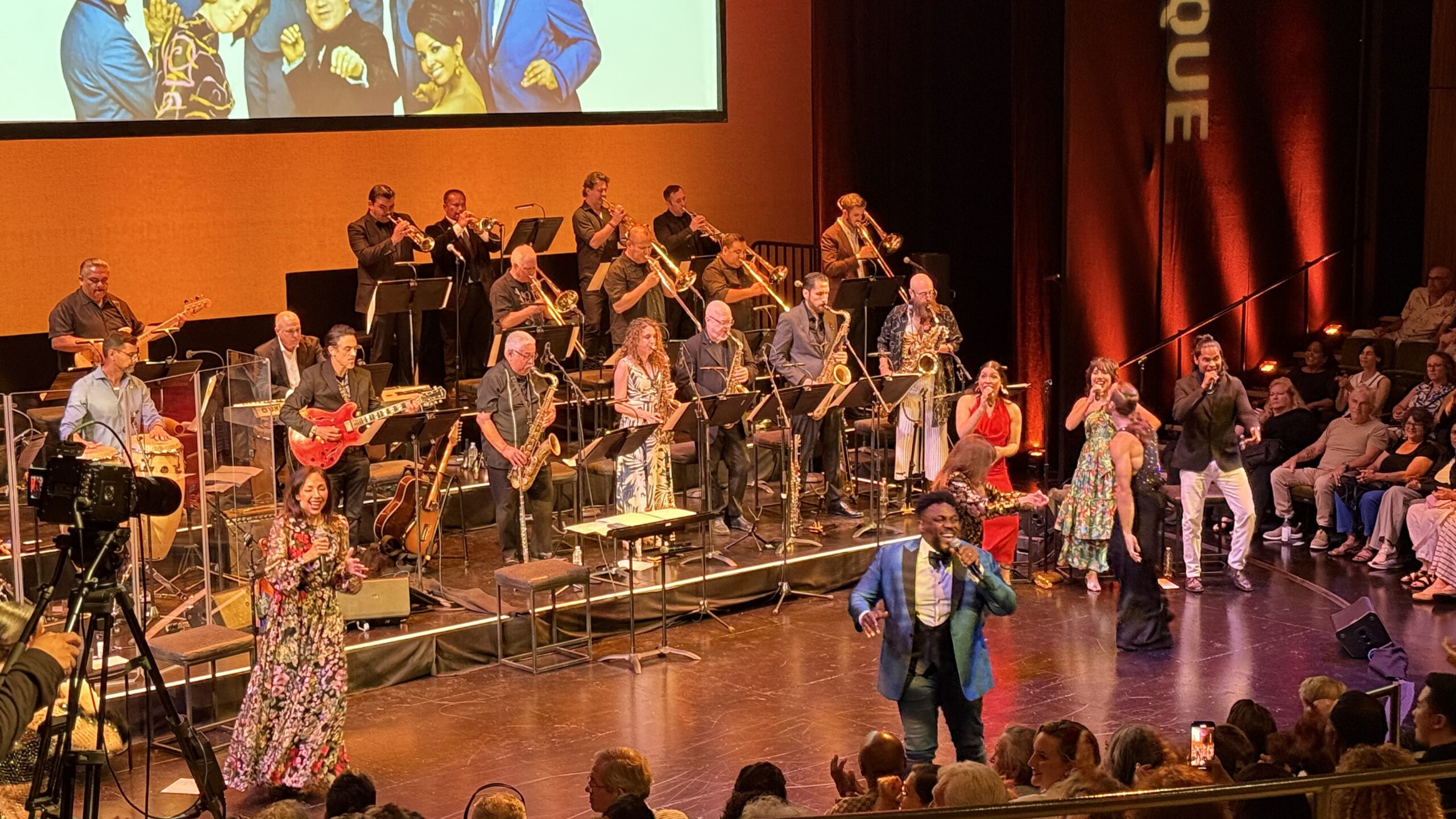
The featured guest artists and singers were superb, but I could not keep my eyes off the dancers executing athletic and sultry pas de deux in their spangling black costumes. At one point the woman even lifted her muscular male partner! Impressive!!
A real eye-opener was learning that famed composer Leonard Bernstein resided two blocks away from the Palladium Ballroom, the hotspot for the mambo craze in the U.S. and the birthplace of the phrase “Mambo Madness.” It was a place where the music was welcomed by audience members from all cultures. More importantly, it was truly a desegregated venue. Worby noted how authentic the mambo sequences of West Side Story were, thanks to Bernstein’s exposure to – and enthusiasm for – the Latin grooves at this storied venue.
Backstory on Palladium Ballroom:
From 1947–1966 the Palladium Ballroom on 53rd St & Broadway, in Midtown Manhattan, was a celebrated venue for Latin jazz, mambo and cha-cha. Tito Puente, Tito Rodríguez, Machito with his Afro-Cubans, Celia Cruz, and Dizzy Gillespie all performed there to enthusiastic crowds.
Long before Studio 54 made headlines, before CBGB became shorthand for grit, the most exciting room in New York City was tucked into an unassuming corner at 53rd and Broadway. They called it the Palladium Ballroom, but it was less a ballroom than a laboratory; a place where cultures collided at 200 beats per minute and something entirely new came out of the experiment.
During the late 1950s, the mambo movement was in full fever. Inside, the air was warm with perfume, sweat, and brass. Tito Puente could whip the crowd into a frenzy with a single break on the timbales; Machito’s Afro-Cubans made the floor feel like it was levitating. From the balcony, you could look down and see something remarkable for the time: a Black jazz dancer from Harlem spinning a white secretary from Queens, a Puerto Rican couple teaching steps to two Italian kids from the Bronx, and a Jewish GI home from Korea trying not to step on his Dominican date’s toes.
This wasn’t just an integrated space, it was exuberantly integrated, providing an antidote to the city’s unspoken social codes. No maître d’ guarded the door with a raised eyebrow, no “private club” excuse kept the crowd homogenous… Here, everyone was equal under the dictatorship of rhythm. The rule was simple: if you could dance, you belonged. Nice!
Celebrities wandered in, too. Luminaries such as Marlon Brando, Kim Novak, and even Dizzy Gillespie (who also performed there) would frequent the venue, but they didn’t sequester themselves in roped-off booths. Rather, they were part of the mix, pulling strangers onto the floor or leaning into the bandstand to trade jokes with the percussionists. It was a democracy of sweat and swing, a vision of what America could look like if it danced first and asked questions later. Ha!
By the time the Palladium Ballroom closed in 1966, the mambo had already fused with jazz, laid the groundwork for salsa, and left a generation of New Yorkers with the memory of a room where difference was an advantage, not an obstacle. In an era obsessed with lines, racial, social, cultural, the Palladium’s greatest legacy was how joyfully it erased them.
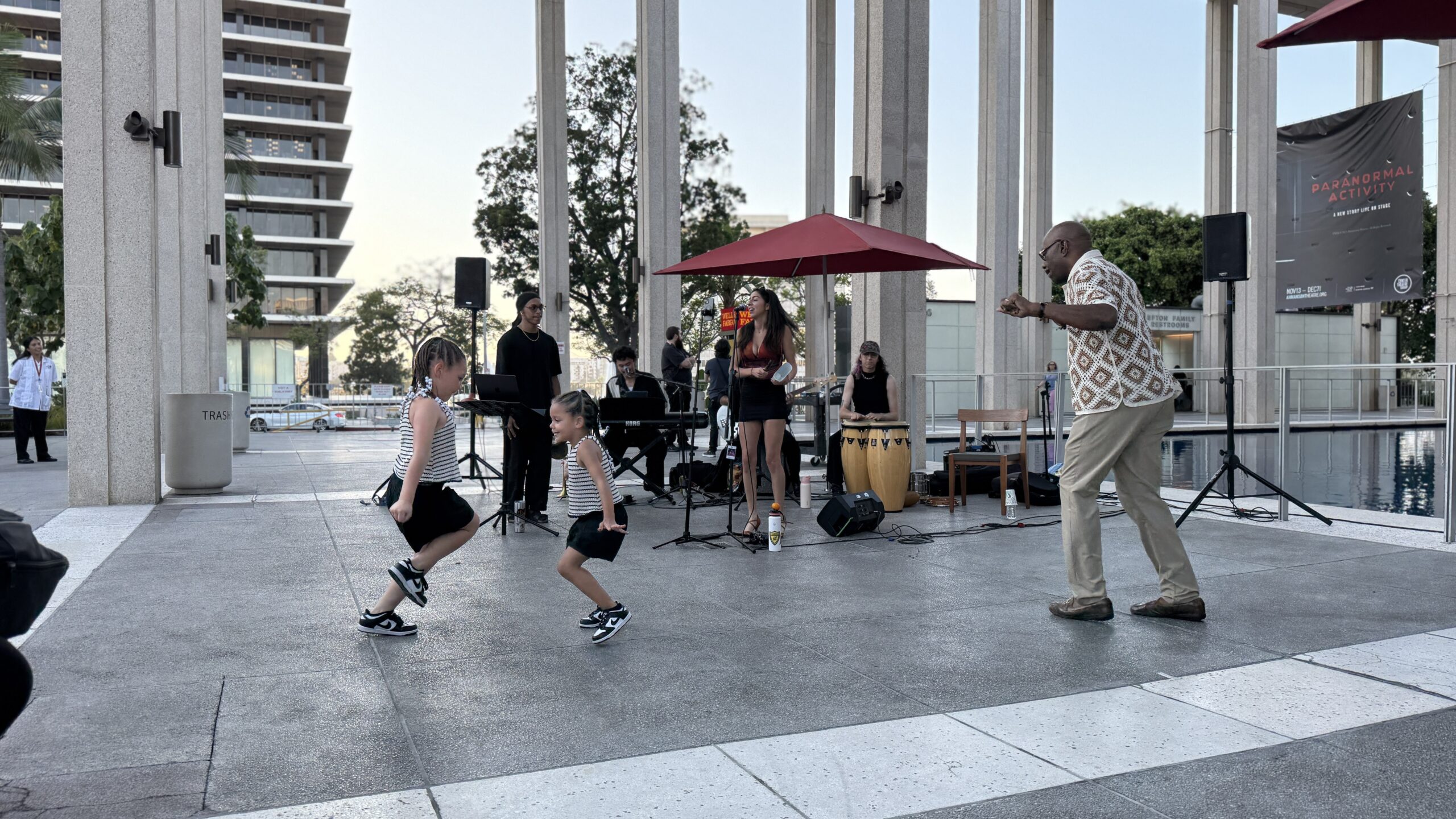
MUSE/IQUE Membership
To learn more about membership and attendance, please visit muse-ique.com/membership
- MUSE/IQUE membership begins at $225 and MUSE/IQUE members receive complimentary admission to all MUSE/IQUE events.
- Admission for non-members starts with a trial membership of $100, which includes three consecutive performances.
-
Members get free admission to 12 months of MUSE/IQUE programs, effective from your date of purchase.
New to MUSE/IQUE? Experience a show before joining membership through their trial membership, or with single admission.
FREE Open House concerts
The 2025 MUSE/IQUE season continues with FREE Open House concerts of MADE IN MEMPHIS (September 12-14, 2025, Pasadena’s Memorial Park) about Stax, Soul and the black artists who started a sound revolution, and concludes with HAVE YOU EVER HEARD OF ETTA JAMES? – the guts and triumph of an American icon (October 14-15 & 19, 2025, Huntington and Skirball), followed by a final concert especially for their donors, STAND BY ME: Season After Party, featuring the hit tunes of Leiber and Stoller and planned for November, location and date to be announced.
MUSE/IQUE is in the midst of a two-year exploration of key musical moments in America—the first initiative of its kind in MUSE/IQUE’s history. During 2025, they are expanding on the themes that were introduced in 2024.
This two-year season is proudly presented by LeeAnn and Ron Havner / JCS Family Foundation. 2025 CTG:FWD programming at the Mark Taper Forum is made possible through the generous support of the S. Mark Taper Foundation. Additional funding is provided by gifts to the Artistic Director Discretionary Fund.
About MUSE/IQUE:
MUSE/IQUE is a member-supported, nonprofit performing arts organization making radically engaging live music experiences accessible for all. Built on a tradition of community and collaboration, we create events that feature an eclectic mix of artists and artistic disciplines that take place at a variety of our city’s historic locales and cultural institutions. MUSE/IQUE creates immersive musical adventures with an artistic collective that consists of top musicians from the worlds of jazz, rock, blues, gospel, and more, along with today’s best singers, dancers, and thinkers. Together with an enthusiastic and growing audience base, these artists reimagine the possibilities for the live music experience. MUSE/IQUE presents six major public events each year as well as a wide range of education and community engagement programs.
Founder and Artistic & Music Director Rachael Worby seamlessly blends musical performances with researched curation, combining music, movement, and ideas from a diverse range of genres. Each performance awakens our collective curiosity and inspires new thinking and ideas by provoking reflection and dialogue, challenging convention, and encouraging our audiences to see and think differently. Our mission is to build empathy and expand imaginations, creating context and explaining connections between our music and the world.
In addition to its live public performances, MUSE/IQUE brings intimate, interactive events to a growing list of community partner organizations. Each on-site event gives participants a curated experience based on programmatic themes of our upcoming performances and features guest artists direct from the MUSE/IQUE stage. Led by MUSE/IQUE staff, these events explore self-expression, encourage self-confidence and engage imaginations through music.
Partners include Ability First, Academy for Creative Industries – Marshall Fundamental High School, Academy of Music for the Blind, Braille Institute, California School of the Arts – San Gabriel Valley, Community Center of La Cañada Flintridge, Five Acres, Hollywood Food Coalition, Jazz Hands for Autism, Learning Works Charter School, Light Bringer Project, Mindful Veteran Project, Music Heals Mind, Pasadena Senior Center, Performing Arts For All, Professional Child Development Associates, San Fernando Valley Youth Chorus, Sycamores, Thomas Jefferson High School, TJHS Alumni Association, UCLA Community Youth Programs, Union Station Homeless Services – Centennial Place, Union Station Homeless Services – Heritage Square South, Urban Voices Project, Villa Esperanza School and Services, WriteGirl, Young Musicians Foundation, Youth Moving On (A Hillsides Program).


